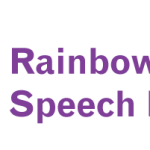The Monteiro Interview Guidelines for Diagnosing the Autism Spectrum, 2nd Edition (MIGDAS-2)
Has someone close to you ever described your child as quirky or different? You might have observed them spinning, toe walking and focusing intently on sparkly lights for long periods. Maybe they repeating song lyrics and playing differently to their siblings and peers. Maybe they don’t talk much, talk a lot and interrupt others, speak in an accent or in phrases rather than single words. Wouldn’t it be great to capture examples of all these quirks to create a comprehensive brain profile highlighting your child’s many strengths as well as differences to take to your paediatrician? If this describes your child, The MIGDAS-2 assessment is a good choice.
The Monteiro Interview Guidelines for Diagnosing the Autism Spectrum, 2nd Edition (MIGDAS-2) is a sensory-based assessment for gathering information needed to diagnose autism in children and adolescents.
The process includes guidelines for gathering information from caregivers and teachers, and for conducting a sensory play-based interview with the child being evaluated. The end result is a comprehensive brain profile that describes the individual’s distinct way of relating to the world, supplementing other assessment scores (such as the ADOS, sensory profile or language assessments) and informing diagnosis and treatment planning.
The MIGDAS-2 process is designed to facilitate writing a neuro affirming narrative style evaluation report and providing diagnostic feedback using language that is easily understood by parents, paediatricians and teachers.
Key Features of the MIGDAS
• Interactive interview techniques: The MIGDAS-2 provides detailed, concrete guidelines for conducting interactive diagnostic interviews with children and adolescents with autistic traits. Including those with internalised presentations and high masking. These interviews combined with in depth interactions give a more detailed impression of the child’s presentation to inform an Autism diagnosis.
• Parent/caregiver and teacher participation: The MIGDAS-2 provides structured guidelines for obtaining key information from parents/caregivers and teachers about the individual’s patterns of behaviour in home and school settings.
• Comprehensive qualitative information: The MIGDAS-2 is a unique evaluation tool that guides the evaluator to formulate a brain profile based on direct interactions with the individual being evaluated and the individual’s parents/caregivers and teachers.
• Sensory-based approach: Emphasising the use of sensory materials and encouraging discussion of areas of high interest to the individual, the MIGDAS-2 process provides a system for evaluators to gather distinctive examples of behaviour patterns often seen Autistic children.
• Treatment planning: Focuses on changing the environment and adults surrounding the child’s behaviour to help support the child- not changing the child themselves.
Written by Calla Dolton MIGDAS trained Speech Pathologist


